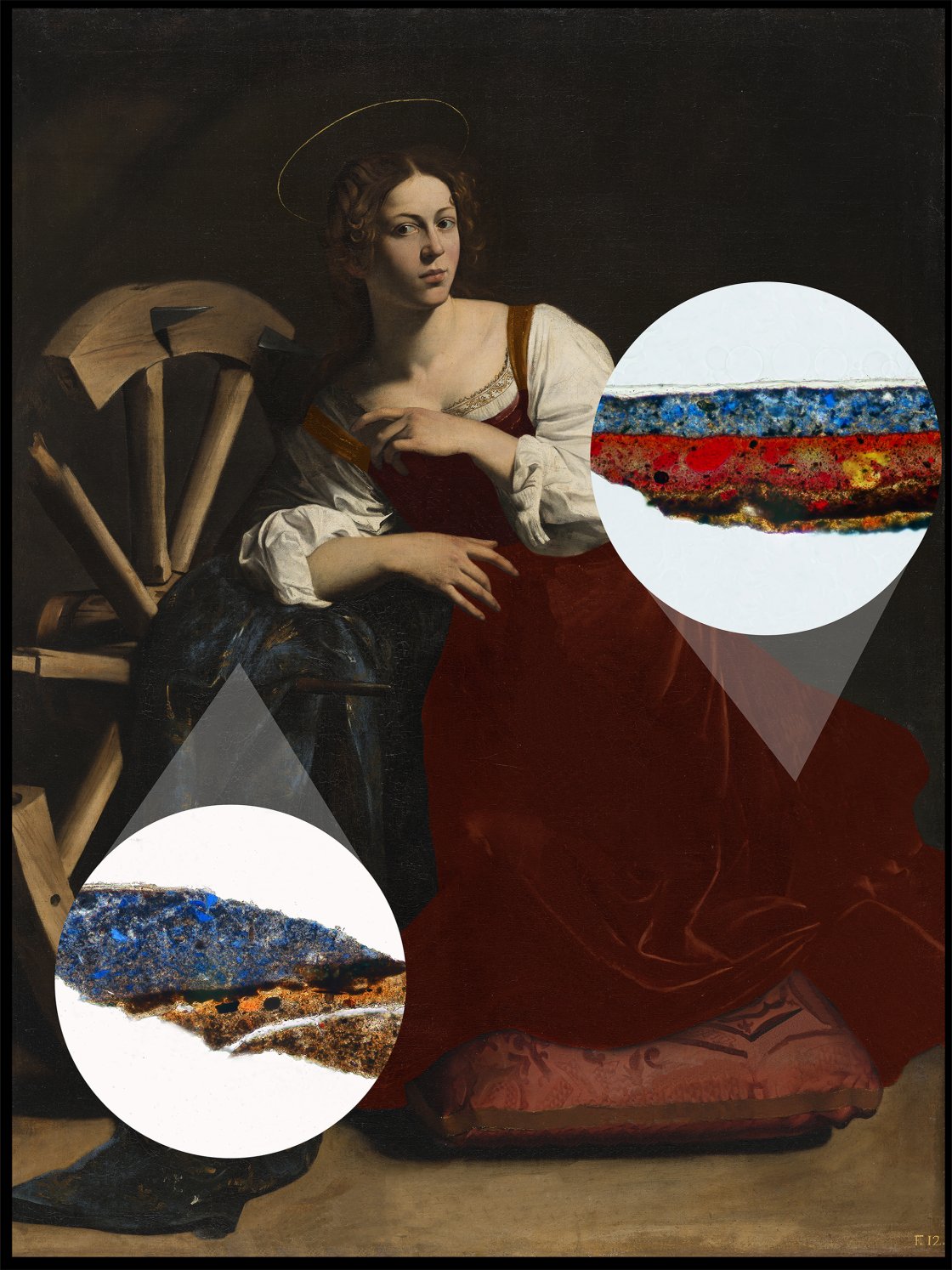Restoration and technical study
The project’s objectives were to reveal the most interesting aspects of the creative process behind the work, to unravel the mystery of how it was conceived and, lastly, to gain a deeper insight into how the artist worked.
The analysis consisted in applying the different methods commonly used in museum laboratories: X-ray, infrared reflectography, analysis of the materials used by the painter, and detailed photographic documentation. Using this methodology, we set out to determine the technique employed, the composition of the materials, their distribution in the different layers, and the alterations and rectifications that Caravaggio made during the creative process.
Discovering the painting
Although the work appeared to be in good condition, there were signs of slight alterations in the varnish layers. Based on the findings of the technical analyses, various tests were carried out to determine the most appropriate method for removing these altered layers of varnish in accordance with the Museum's protocols.
Each stage of the process uncovered rich hues and glazes which the passage of time had gradually vanished. After long months of work, the saint is now revealed again in all her glory, with the intense chiaroscuro effects and range of colours that only a great master could conceive.


Discovering the technical study

The raking light image
The photograph obtained with raking light provides an image of the surface and clearly reveals the reliefs and textures in the painting.
This method enables us to see Caravaggio's hallmark incisions. He made them in the ground layer and used them as a reference to place the composition.
The images above show the incisions he made on the saint's mouth and around the edges of the wheel spikes.
Infrared Reflectography
Infrared radiation reveals the hidden layers underneath the colours, such as the preparatory drawing which served as a base for the artist on which to apply the different layers of pigment. This technique also detects the corrections or pentimenti introduced during the creative process.
Caravaggio corrected the dimensions of the wheel with dark brushstrokes to achieve the definitive form. He also rectified the position of the fingers on the saint's hands in the final version, as we can see in the image.

A mysterious dress

Micro-sample of the robe: in the lower part, the light areas correspond to the ground and the thin whitish layer applied over it. The red layer we see corresponds to the first version of the robe, applied in two layers. Lastly, the purple-blue colour of the definitive robe was achieved by mixing lapis lazuli with grains of azurite, cochineal carmine, coal, white lead and earth pigments.
Micro-sample of the cloak: the underlying ground and the whitish layer on top of them are visible. An azurite base was applied over these layers then covered with a thick blue layer of lapis lazuli mixed with finely ground coal.
The X-ray image
The X-ray analysis yields valuable information about the details not visible to the viewer, revealing aspects of the pictorial technique the artist used as well as the composition and material history of the painting.
The most significant changes during the production of the work were made to the young protagonist's hands: the artist originally placed them higher and then corrected their position. Numerous fingers are visible around the left hand, indicating that Caravaggio toyed with different placements before finally deciding on the one we see today.
In the area where the wheel is located, the artist sketched practically the entire circumference to assist its placement. The story of the miracle that occurred to the saint describes how the wheel broke through the intercession of the angels and the artist therefore covered the missing part with paint.









